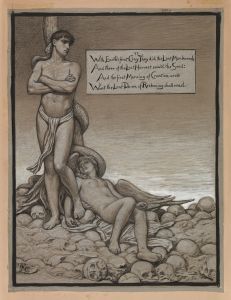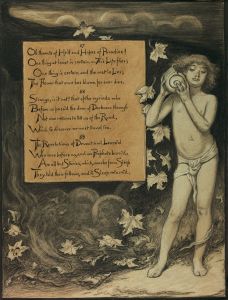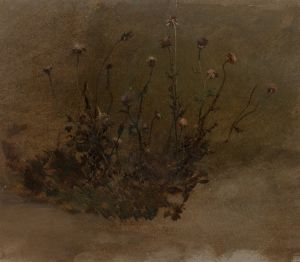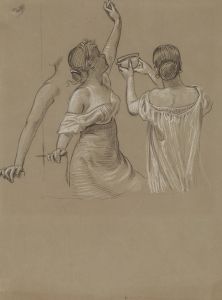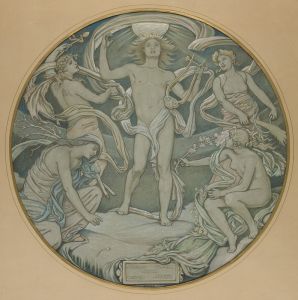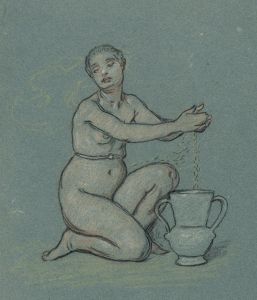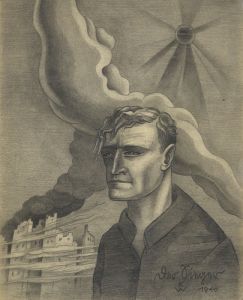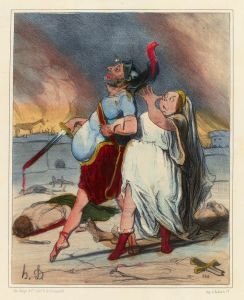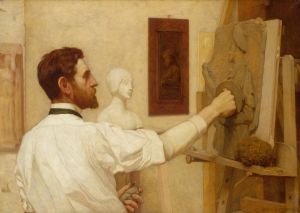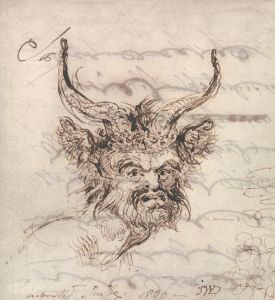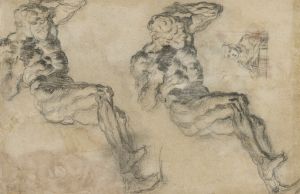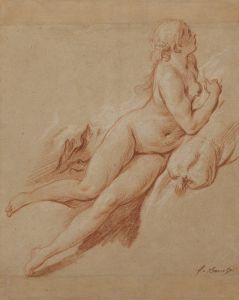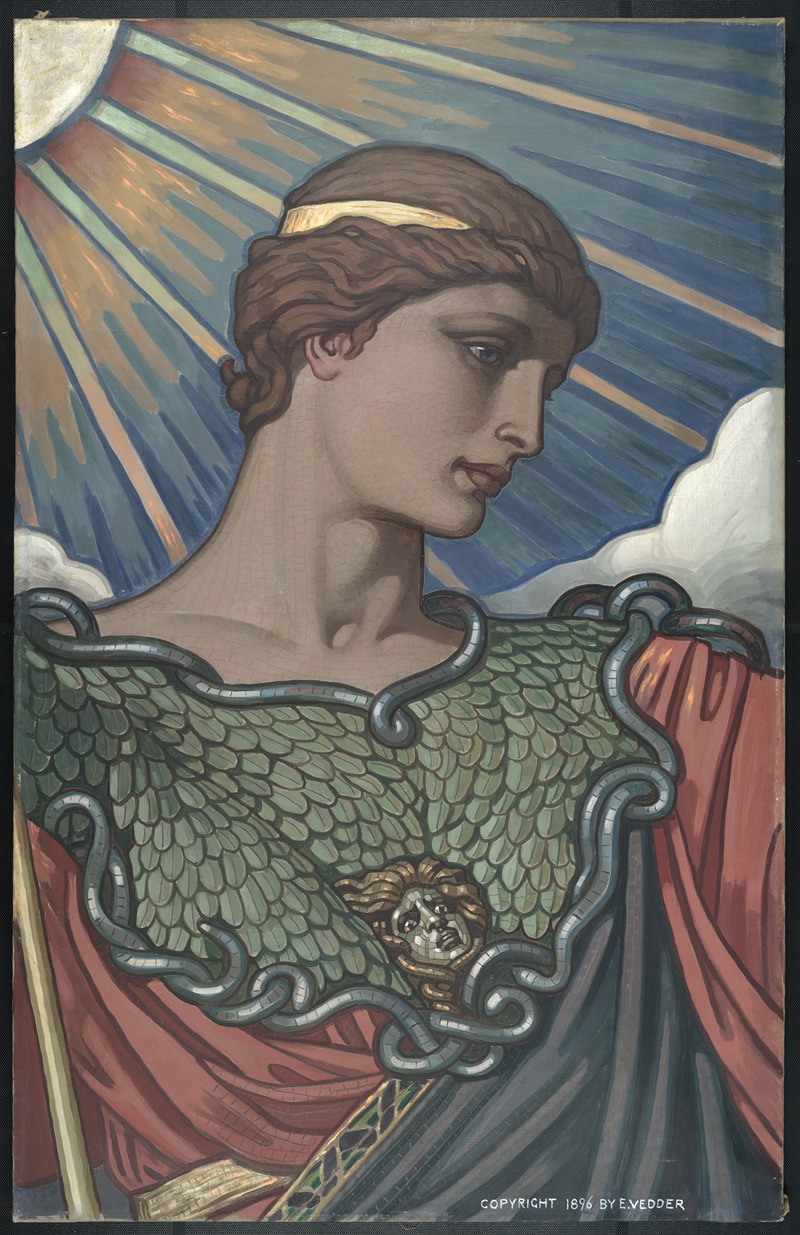
Head of Minerva
A hand-painted replica of Elihu Vedder’s masterpiece Head of Minerva, meticulously crafted by professional artists to capture the true essence of the original. Each piece is created with museum-quality canvas and rare mineral pigments, carefully painted by experienced artists with delicate brushstrokes and rich, layered colors to perfectly recreate the texture of the original artwork. Unlike machine-printed reproductions, this hand-painted version brings the painting to life, infused with the artist’s emotions and skill in every stroke. Whether for personal collection or home decoration, it instantly elevates the artistic atmosphere of any space.
Elihu Vedder was an American symbolist painter, born on February 26, 1836, in New York City. He is best known for his allegorical works and his contributions to the American Renaissance movement. Vedder's art often explored themes of mythology, literature, and philosophy, reflecting his deep interest in these subjects. One of his notable works is "Head of Minerva," which exemplifies his skill in capturing the essence of mythological figures.
"Head of Minerva" is a painting that depicts Minerva, the Roman goddess of wisdom, strategic warfare, and the arts. Minerva is often equated with the Greek goddess Athena, and she is traditionally portrayed as a figure of intellect and strength. In Vedder's representation, Minerva is shown with a serene and contemplative expression, embodying the wisdom and calm authority associated with her character.
Vedder's approach to this painting reflects his symbolist tendencies, focusing on the inner qualities of the goddess rather than merely her physical attributes. The painting is characterized by its detailed attention to the facial features and the subtle use of light and shadow, which adds depth and dimension to Minerva's visage. The choice of colors and the soft, almost ethereal quality of the brushwork contribute to the painting's overall sense of tranquility and introspection.
Elihu Vedder's work, including "Head of Minerva," was influenced by his extensive travels and studies in Europe, particularly in Italy, where he was exposed to classical art and Renaissance masterpieces. This exposure is evident in his ability to blend classical themes with a modern sensibility, creating works that resonate with both historical significance and contemporary relevance.
Throughout his career, Vedder was associated with the American Pre-Raphaelites and later became a prominent figure in the symbolist movement. His works often featured dreamlike imagery and explored themes of existentialism and the human condition. "Head of Minerva" fits within this context, as it invites viewers to contemplate the nature of wisdom and the role of intellect in human affairs.
Vedder's contribution to art extends beyond his paintings; he was also an accomplished illustrator and poet. His illustrations for the Rubáiyát of Omar Khayyám are particularly celebrated for their intricate detail and imaginative interpretation of the text. This versatility in different artistic mediums further underscores his ability to convey complex ideas through visual art.
"Head of Minerva" remains a testament to Vedder's artistic vision and his ability to capture the timeless qualities of mythological figures. The painting is a reflection of his broader oeuvre, which continues to be appreciated for its depth, symbolism, and beauty. Elihu Vedder passed away on January 29, 1923, in Rome, Italy, leaving behind a legacy of works that continue to inspire and engage audiences worldwide.





